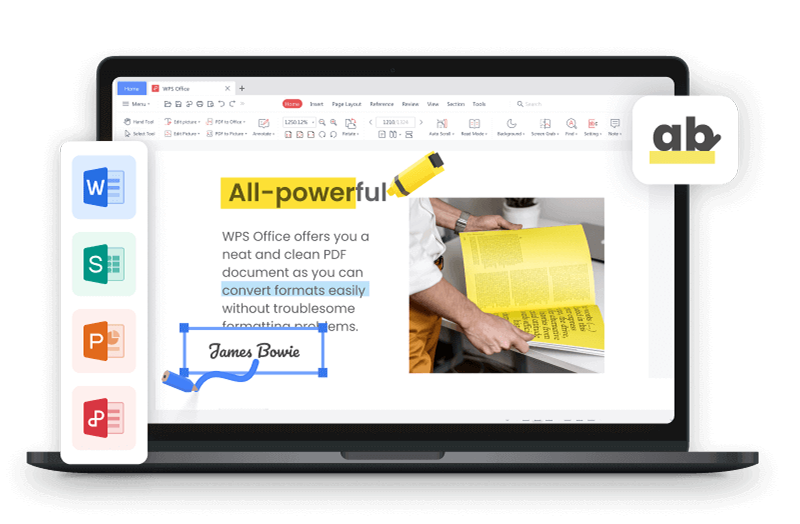Imagine juggling a Word doc, research tabs, and a YouTube tutorial all at once—split screen on Windows 10 makes that chaos a breeze, keeping everything in view. I fumbled with it at first, confused about snapping windows or why apps wouldn’t play nice. How do you master split screen in Windows 10 without losing your cool? I’ve fine-tuned my setup for school and side gigs, and I’m stoked to share five awesome tricks—shortcuts, Snap Assist, dual-monitor hacks, and a WPS Office tip to keep your workflow super smooth. Let’s make your screen a multitasking champ!
Part 1: Using Snap Assist for Effortless Split Screen
Snap Assist is Windows 10’s built-in tool that makes splitting your screen a total breeze—it’s my go-to when I need apps side by side without a fuss.
Step-by-Step Guide:
Step 1: Grab a window by its title bar (the top part) and drag it to the left or right edge of your screen until you see a clear outline pop up.
Step 2: Let go of the mouse, and the window will snap to fill half the screen.
Step 3: Pick another open window from the thumbnails that appear on the other half to fill the remaining space.
Works In: Most apps, like Chrome, Microsoft Word, Excel, File Explorer, and even media players.
Part 2: Using Keyboard Shortcuts for Split Screen
When I want to snap windows without touching the mouse, keyboard shortcuts are my jam—they’re fast, slick, and make me feel like a tech ninja.
Step-by-Step Guide:
Step 1: Press Win + Left Arrow to snap the active window to the left half of your screen.
Step 2: Press Win + Right Arrow to snap another window to the right half.
Step 3: Press Win + Up Arrow to maximize a window or Win + Down Arrow to minimize it if you need to rearrange.
Works In: Pretty much all Windows apps, including browsers, Office tools, File Explorer, and even some games.
Part 3: Customizing Split Screen with Multiple Windows
For those days when two apps aren’t enough, Windows 10 lets you split your screen into three or four sections—perfect for power users like me who thrive on chaos.
Step-by-Step Guide:
Step 1: Use Win + Left Arrow or Win + Right Arrow to snap two windows to each half of the screen.
Step 2: Drag a third window to a corner (top-left, bottom-right, etc.) until it snaps into a quarter-screen section.
Step 3: If you want a fourth window, repeat for another corner.
Step 4: Drag window edges to resize them for your ideal layout.
Works In: Windows 10 Pro and Home editions.
Part 4: Using Multiple Monitors for Extended Split Screen
If you’re rocking a dual-monitor setup, you can take split screen to a whole new level by spreading apps across both screens. I’m obsessed with this for big projects.
Step-by-Step Guide:
Step 1: Right-click the desktop and select “Display Settings.”
Step 2: Scroll to “Multiple Displays” and choose “Extend these displays” to treat monitors as one big desktop.
Step 3: Use Snap Assist (drag windows to edges) or shortcuts (Win + Left/Right Arrow) to split apps across both monitors.
Step 4: Adjust window sizes by dragging edges for your perfect setup.
Works In: Any Windows 10 system with multiple monitors connected via HDMI, DisplayPort, or USB-C.
Part 5: WPS Office: Optimized for Split Screen Productivity
WPS Office is my secret weapon for split-screen multitasking, with features that make juggling multiple documents a walk in the park. I rely on it for school and freelance work.
I snapped WPS Writer on one side and Chrome on the other to write a report while researching. The multi-tab interface let me flip between two drafts without cluttering my screen, and my budget laptop didn’t even flinch. WPS Office is a godsend for how to use split screen in Windows 10 without slowdowns.
FAQs
Q1: How do I undo split screen?
Drag the window away from the edge by its title bar, or press Win + Down Arrow to minimize it and exit split screen.
Q2: Can I use split screen on all apps?
Most apps work with Snap Assist, but some full-screen-only or niche apps might not snap properly—try maximizing first.
Q3: Can I split the screen into more than two sections?
Yup, snap up to four windows by dragging to corners or using shortcuts, best on high-res screens for clear text.
Q4: Does split screen slow down my PC?
Split screen itself doesn’t tax your system, but heavy apps can—use lightweight tools like WPS Office to keep things snappy.








